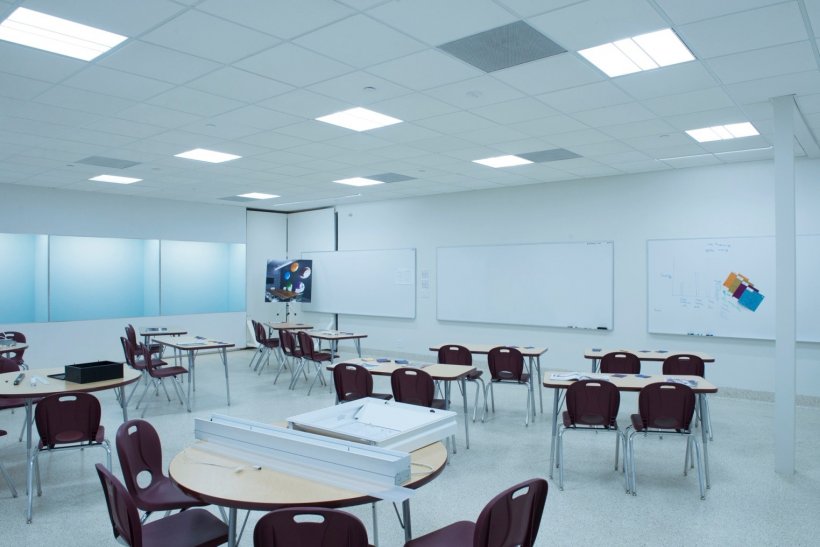In the era of digital learning, the educational landscape is witnessing a significant transformation. One aspect often overlooked is the critical role that advanced system power supply plays in this revolution. Gone are the days of chalk and duster; today’s classrooms are equipped with the latest technology, requiring innovative power solutions to ensure seamless learning experiences.
The Heart of Modern Education
Advanced power supplies are the backbone of digital classrooms, powering everything from smart boards to students’ tablets. They ensure that the technology operates efficiently and reliably, fostering an environment conducive to learning and exploration.
Powering the Digital Native Generation
Today’s students, or ‘digital natives,’ have grown up in a world surrounded by technology. Advanced power supplies in classrooms enable a seamless integration of digital tools into the learning process, meeting the expectations and needs of this new generation.
To further deepen understanding of the critical role of power supplies in educational environments, exploring resources like a comprehensive guide on system power supply can offer invaluable insights. Such information highlights how these essential components contribute to ensuring a reliable and efficient power source for all classroom technology, reinforcing the foundation for effective digital learning.
Energy Efficiency in Education
 As schools embrace technology, the need for energy-efficient power supplies becomes paramount. These modern solutions not only support the sustainability goals of educational institutions but also reduce operational costs, proving that innovation can go hand in hand with environmental stewardship.
As schools embrace technology, the need for energy-efficient power supplies becomes paramount. These modern solutions not only support the sustainability goals of educational institutions but also reduce operational costs, proving that innovation can go hand in hand with environmental stewardship.
Challenges and Solutions
- Scalability: As classrooms become more technologically advanced, power supplies must scale accordingly. Innovative power management systems ensure that as educational technology grows, power solutions can keep up.
- Reliability: Power failures can significantly disrupt learning. Advanced power solutions are designed to be more reliable, minimizing downtime and keeping the focus on education.
- Safety: With an increase in electronic devices in the classroom, safety becomes a top priority. Modern power supplies are equipped with features to protect against overcharging, overheating, and other hazards, ensuring a safe learning environment.
The Evolution of Classroom Technology
From the first overhead projectors to the latest interactive displays, classroom technology has evolved dramatically. This evolution has necessitated advancements in power supply technology, ensuring that these new tools have the energy they need to transform educational experiences.
Smart Power Management Systems
With the proliferation of devices in the classroom, the management of power distribution becomes crucial. Smart power management systems that can automatically adjust power distribution based on real-time needs and device usage can significantly enhance energy efficiency. Such systems can also provide valuable data on power usage patterns, helping schools optimize their energy consumption and reduce waste.
Looking Forward: The Future of Classroom Power Supplies

 The future of classroom technology and its power needs looks expansive. Innovations such as wireless power transfer and more efficient battery technologies could further revolutionize how education is delivered and experienced. The ongoing development in power supply technology promises to keep pace with the ever-evolving demands of the educational sector.
The future of classroom technology and its power needs looks expansive. Innovations such as wireless power transfer and more efficient battery technologies could further revolutionize how education is delivered and experienced. The ongoing development in power supply technology promises to keep pace with the ever-evolving demands of the educational sector.
Enhancing Educational Accessibility
Advanced power supplies and technology play a pivotal role in enhancing educational accessibility. Portable and efficient power solutions can help bridge the gap in remote or underprivileged areas, where access to electricity and digital resources is limited.
By enabling a wider reach, these advancements in power supply technology are crucial in democratizing education, making knowledge accessible to all students regardless of their geographic or socioeconomic status.
Integrating Renewable Energy Sources
As the push towards sustainability intensifies, there’s an increasing emphasis on incorporating renewable energy sources in educational settings. Solar-powered chargers and battery storage units can greatly reduce the carbon footprint of schools while ensuring a constant, reliable power supply. This integration also serves as a tangible lesson in renewable energy for students, instilling the importance of sustainability from a young age.
Wrap-Up
The transformation of classrooms into dynamic, interactive, and engaging learning environments is significantly supported by advances in power supply technology. As we look to the future, it is clear that the role of these systems will only grow in importance, highlighting the need for continued innovation and adaptation. The classroom of tomorrow will not only be defined by the technology it employs but also by the innovative power solutions that drive it.